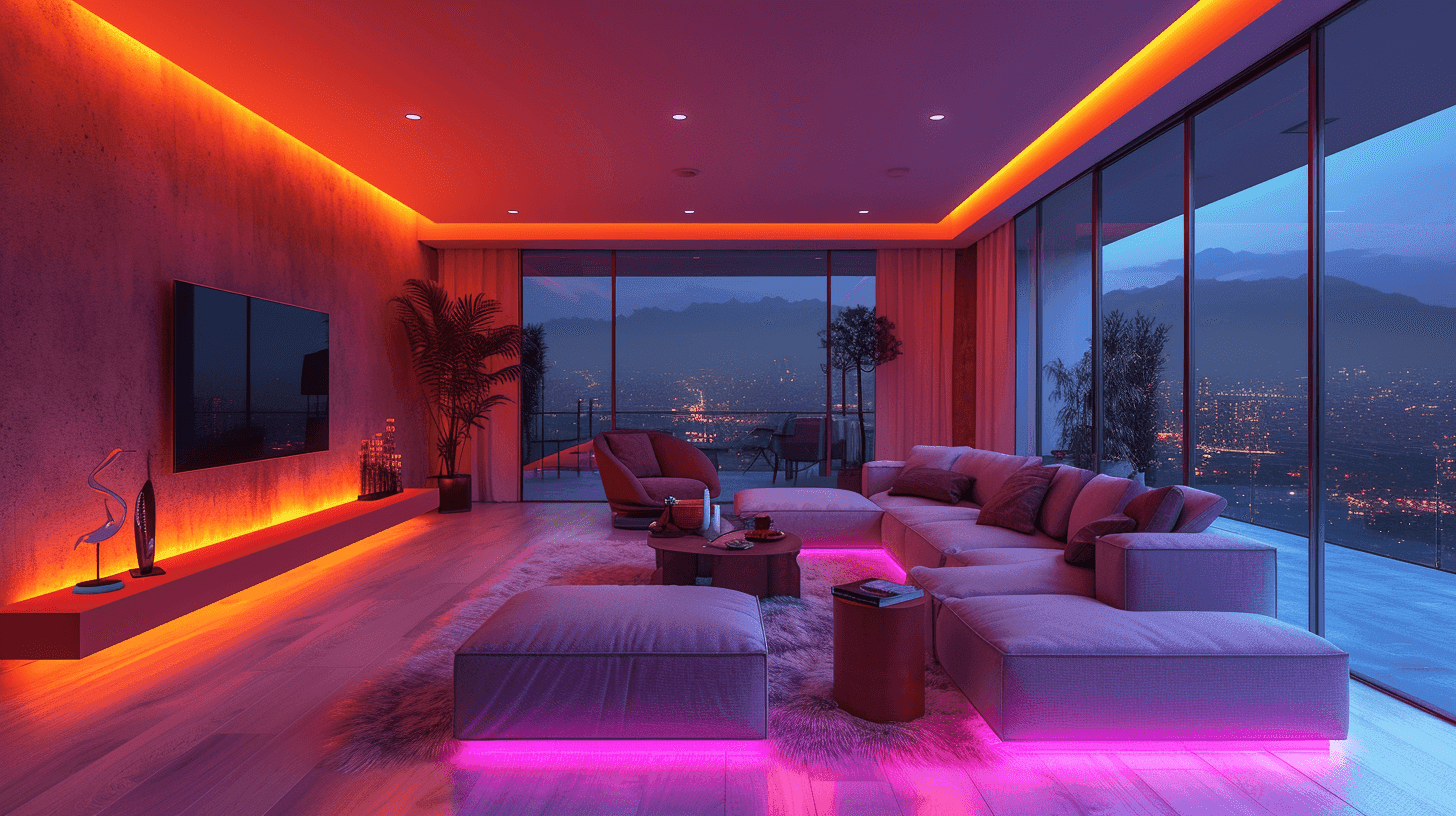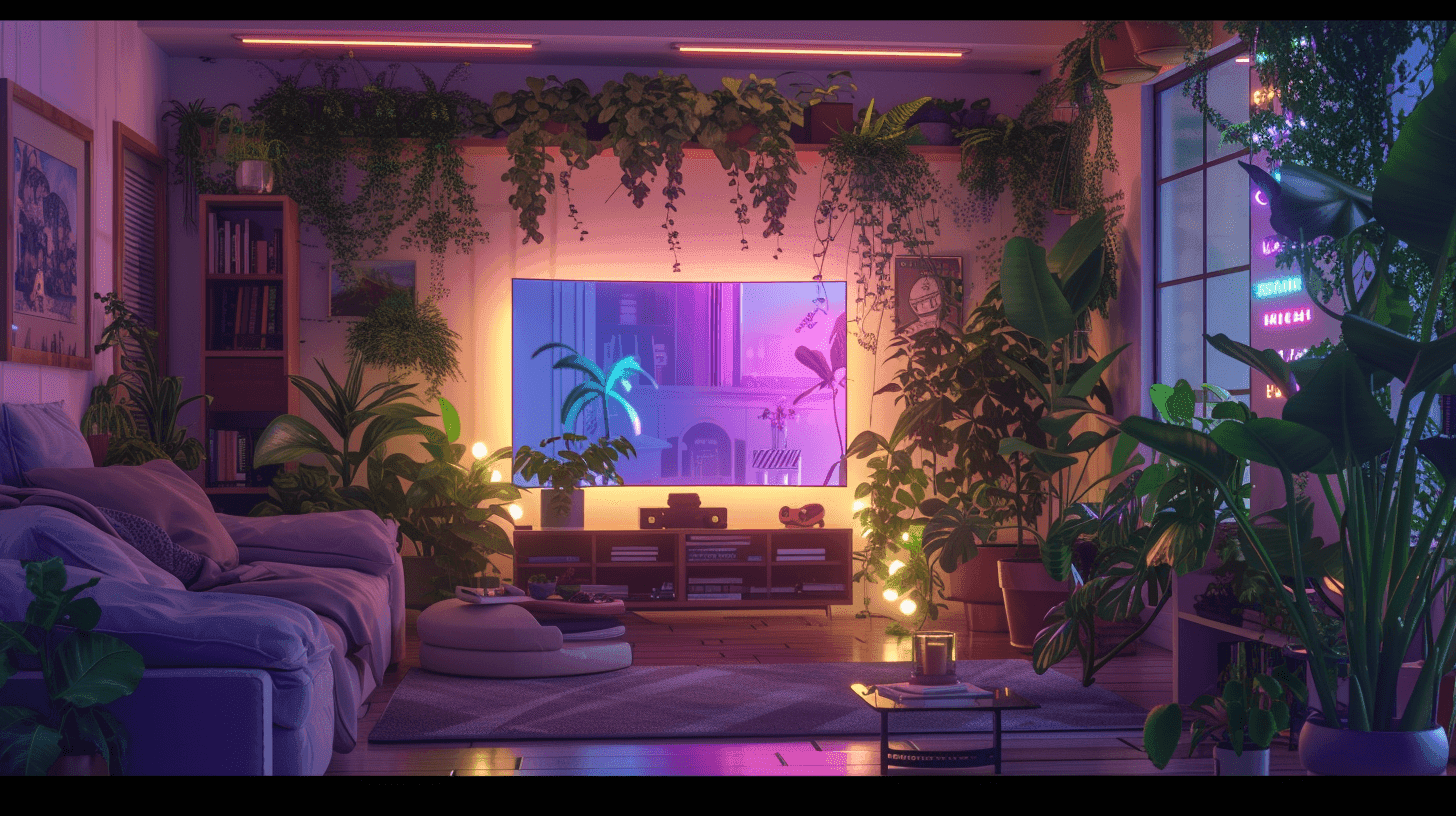Terug
Cutting-Edge Fashion: Wearable Tech and Future Trends in 2024

Introduction
The world of fashion is at an exhilarating juncture, where the seamless integration of technology is not just a futuristic fantasy but a present reality. In this ever-evolving landscape, wearable technology stands at the forefront, revolutionizing how we perceive and interact with fashion. Unlike traditional fashion trends that often prioritize aesthetics, wearable tech intertwines functionality with style, offering a blend that is both innovative and appealing. This marriage of technology and fashion opens up new avenues for self-expression and utility, pushing the boundaries of what clothing and accessories can do.
One of the most fascinating aspects of this fusion is the way it aligns with our daily lives. With the world becoming increasingly digitized, our attire is no longer just about making a style statement; it's about staying connected, healthy, and efficient. Wearable tech, in its essence, symbolizes a move towards a more interactive and personalized wardrobe, where your jacket does more than keep you warm—it could track your heart rate, change color based on your mood, or even display your latest social media notifications.
The integration of technology into fashion also aligns perfectly with the ethos of Pyrilia, a digital journaling and notation app. Pyrilia emphasizes the importance of storing and organizing thoughts, memories, and reflections, a practice that is becoming increasingly significant in the fast-paced world of tech-infused fashion. Imagine jotting down your daily experiences with a smart jacket that adapts to weather conditions or reflecting on how your mood-ring-inspired accessory influenced your interactions throughout the day. Pyrilia becomes a digital archive of not just memories but also of the evolutionary journey of your personal style and technology's role in it.
The Rise of Smart Clothing
When we talk about smart clothing, we're referring to garments that go beyond the basic function of covering the body, instead integrating digital technology to add functionality. This revolutionary concept has gained significant traction in recent years, driven by advances in textiles, miniaturization of hardware, and the increasing consumer appetite for smart products. From shirts that can monitor your heart rate and fitness levels to jackets that can control your smartphone, the possibilities are endless and thrilling.
One of the most groundbreaking developments in smart clothing is the emergence of smart fabrics. These materials are designed to react to various stimuli like temperature, pressure, or even the presence of certain chemicals. For example, consider a sports bra equipped with fabric sensors that track fitness metrics, or a suit jacket with conductive threads that allow for touch-sensitive control of your music playlist. These innovations are not only practical but also pave the way for a more interactive relationship with our clothes.
Innovations in Smart Clothing
- Temperature-Responsive Fabrics: Imagine a coat that adjusts its thermal properties based on the external temperature, keeping you comfortable in a variety of climates.
- Biometric-Monitoring Clothes: Garments equipped with sensors that monitor vital signs, providing real-time health updates and potentially even saving lives.
- Color-Changing Materials: Fabrics that change color or pattern based on external stimuli, allowing for dynamic fashion statements.
- Energy-Harvesting Textiles: Clothes that can harness energy from the environment (like solar or kinetic energy) to power small electronic devices.
One question often asked is, "What are the latest advancements in smart clothing?" The answer lies in the continual miniaturization and integration of technology. We now have garments with embedded LED screens, allowing wearers to display custom messages or designs. There's also significant progress in developing fabrics with enhanced durability and flexibility, making them more suitable for everyday wear.
The implications of these advancements are vast. Not only do they offer enhanced convenience and functionality, but they also open doors for new ways to express individuality and style. The blend of fashion and technology is not just about utility; it's a new form of art, a fresh medium for designers and tech enthusiasts to explore and innovate.
Wearable Tech in Everyday Fashion
In recent years, wearable technology has seamlessly transitioned from being a niche market to a mainstream fashion trend. This shift is characterized by the infusion of technology into everyday fashion items, making them not just more functional but also more stylish. The key to this transition lies in the delicate balance between aesthetics and utility. Designers and tech companies are collaborating to produce pieces that don't just serve a technological purpose but also adhere to the latest fashion trends.
Take, for instance, smartwatches and fitness trackers. Once bulky and unappealing, they are now sleek, stylish, and come in various designs to suit different tastes and occasions. These devices have become a staple in many wardrobes, offering a range of functionalities from tracking fitness and health metrics to allowing users to control their smart home devices. Another example is smart glasses. Initially met with skepticism, they have evolved into fashionable accessories, offering augmented reality experiences while looking no different from a regular pair of stylish eyeglasses.
This integration raises the question, "How is wearable tech becoming more fashionable?" The answer lies in the evolution of design approaches. Tech companies are now working with fashion designers to create products that are not just functional but also aesthetically pleasing. This collaboration ensures that wearable tech complements the user's style rather than detracting from it. It's a symbiotic relationship where technology enhances the fashion element, and fashion, in turn, makes technology more accessible and appealing.
Examples of Stylish Tech Accessories
- Designer Smartwatches: High-end brands collaborating with tech companies to create luxury smartwatches.
- Fashionable Fitness Trackers: Fitness bands that double as elegant bracelets or necklaces.
- Tech-Infused Handbags and Wallets: Bags and wallets that can charge your smartphone or have built-in LED lighting.
- Interactive Clothing: Garments with built-in touch-sensitive interfaces to control music or lights.
The future of wearable tech in everyday fashion is not just about incorporating technology into clothing and accessories; it's about creating a seamless blend that elevates the user's lifestyle and style quotient.
High-Tech Accessories: More Than Just Fashion Statements
The realm of high-tech accessories extends beyond the realms of mere fashion statements; they are a testament to how far we've come in integrating technology into our daily lives. These accessories are not just about looking good; they are about adding a layer of convenience and functionality to the user's day-to-day activities.
One of the most prominent examples of such accessories are smart rings. These compact devices can perform a multitude of functions, from tracking fitness and sleep patterns to enabling contactless payments and controlling smart home devices. They are designed to be discreet yet stylish, offering a subtle way to stay connected without the need for more conspicuous devices like smartphones or smartwatches.
Another innovative accessory is the smart scarf. Equipped with built-in heating elements and environmental sensors, these scarves can adjust their temperature according to the weather conditions, ensuring the wearer's comfort at all times. They represent a fusion of fashion, comfort, and technology, providing a practical yet stylish solution to everyday challenges.
Functionality and Utility of Tech-Enhanced Accessories
- Smart Jewelry: Pieces that offer health tracking, notification alerts, and even stress management tools.
- E-Textiles: Clothing with embedded LED lights or screens, allowing for customizable patterns and messages.
- Wearable Cameras: Fashionable accessories that capture moments hands-free, blending seamlessly with the wearer's outfit.
- Tech-Enabled Shoes: Footwear with built-in GPS trackers, fitness monitors, or even self-tying features.
The significance of high-tech accessories goes beyond just being an extension of one's smartphone. They are a reflection of how technology can enhance our lives in the most unobtrusive and stylish ways. As technology continues to advance, we can expect these accessories to become even more sophisticated, further blurring the lines between fashion and functionality.
The Future of Fashion: Sustainability and Tech
As we advance into 2024, the conversation around fashion is increasingly pivoting towards sustainability. The fusion of technology with fashion is playing a pivotal role in this shift, introducing innovative ways to reduce waste and increase efficiency in the fashion industry. The use of technology in creating sustainable fashion is not just a trend; it's becoming a necessity for a world grappling with environmental challenges.
Sustainable fashion tech takes various forms, from materials made from recycled plastics to digital fitting technologies that reduce returns and waste. One of the most notable advancements is in the realm of fabric innovation. Scientists and designers are collaborating to develop materials that are not only eco-friendly but also technologically advanced. For instance, bio-fabrics grown in labs, reducing the need for traditional resource-intensive textile production. Another significant development is the use of AI in fashion design and manufacturing, which helps in minimizing waste by predicting style trends and optimizing production processes.
The role of technology in promoting sustainable fashion practices extends to the consumer experience as well. Virtual try-on apps and online fitting rooms are becoming increasingly sophisticated, offering a more accurate and personalized shopping experience. This not only enhances customer satisfaction but also significantly reduces the environmental impact of returns and exchanges.
Innovations in Eco-Friendly Materials and Processes
- Lab-Grown Fabrics: Environmentally sustainable materials grown in controlled settings, reducing ecological footprint.
- Recycled and Upcycled Materials: Technology enabling the transformation of waste materials into high-quality fabrics.
- 3D Printing in Fashion: Reducing waste by creating precise and customized pieces using 3D printing technology.
- AI in Supply Chain Management: Optimization of production and distribution to minimize waste and reduce carbon footprint.
This sustainable approach to fashion, powered by technology, is reshaping the industry into one that is more responsible, ethical, and in tune with the planet's needs.
Virtual Reality and Fashion: A New Way to Shop and Style
The intersection of virtual reality (VR) and augmented reality (AR) with fashion is transforming the shopping and styling experience. In 2024, these technologies are not just gimmicks; they are essential tools that are reshaping the retail landscape. VR and AR offer immersive and interactive experiences, allowing consumers to try on clothes virtually, customize their outfits, and even experience fashion shows from the comfort of their homes.
One of the most exciting applications of VR in fashion is the virtual fitting room. These digital spaces allow users to create a 3D avatar based on their measurements and try on different outfits virtually. This technology not only makes online shopping more reliable and enjoyable but also significantly reduces the environmental impact of returns. Similarly, AR apps enable consumers to see how a piece of clothing would look on them through their smartphone screens, providing a convenient and personalized shopping experience.
Beyond shopping, VR and AR are becoming tools for creative expression in fashion. Designers are using these technologies to create virtual fashion shows and presentations, offering an entirely new way of experiencing fashion. This digital approach is not only innovative but also more accessible, allowing people from all over the world to partake in fashion events that were previously limited to select attendees.
Impact of VR and AR in the Fashion Shopping Experience
- Virtual Fitting Rooms: Enhancing online shopping with 3D models and virtual try-ons.
- Augmented Reality in Retail: AR mirrors and apps allowing customers to virtually try on clothes and accessories.
- Virtual Fashion Shows: Designers showcasing their collections in immersive virtual environments.
- Digital Wardrobes: Apps that let users mix and match their clothing virtually, helping in decision making and styling.
The integration of VR and AR in fashion is not just changing how we shop; it's revolutionizing the entire experience of fashion, making it more interactive, personalized, and accessible to a broader audience.
Personalizing Fashion Through Technology
The evolution of technology in fashion is not just about bringing new gadgets into our lives; it's also about personalizing our fashion experience in ways previously unimaginable. In 2024, technology is enabling a level of customization in fashion that caters to individual preferences and styles like never before. This personalization ranges from tailor-made clothing fitting your exact measurements to accessories that can be customized in real-time according to your mood or the occasion.
One striking example is the use of body scanning technology in tailoring. This technology allows for precise measurements, ensuring that clothes fit perfectly to an individual's body shape and size. This not only enhances the comfort and look of the garments but also significantly reduces the waste associated with ill-fitting clothes. Additionally, smart accessories like customizable LED-lit handbags or programmable jewelry add a unique personal touch, allowing wearers to express their style in dynamic ways.
The question of how technology allows for greater personalization in fashion is further answered by the advent of apps and software that enable users to design their own clothing. These platforms offer a range of tools and options, from selecting fabrics and cuts to adding personalized embellishments, making the user an active participant in the fashion creation process.
Customization Options Enabled by Tech Advancements
- Body Scanning for Tailored Clothing: Utilizing 3D body scanning technology for perfectly fitting garments.
- Smart Jewelry and Accessories: Accessories that change color or pattern based on user input or environmental factors.
- Interactive Footwear: Shoes with interchangeable panels or smart features that can adapt to different styles and needs.
- DIY Fashion Apps: Software that allows users to design and customize their own clothing and accessories.
This move towards personalization in fashion, enabled by technology, is not just about style; it's about creating a deeper connection between the wearer and their wardrobe, making each piece more meaningful and tailored to individual lifestyles.
Wearable Tech for Health and Wellness
As we delve deeper into 2024, wearable technology is increasingly focusing on enhancing health and wellness. This trend is a convergence of fashion, technology, and healthcare, where wearable devices are designed not only to be fashionable but also to monitor and improve the wearer's health. These devices range from smartwatches that track fitness activities and sleep patterns to clothing that monitors physiological signals and provides biofeedback.
One of the most significant areas of growth in this sector is in clothing that can monitor health. Imagine a shirt that not only tracks your heart rate and calories burned but also analyzes your breathing patterns and posture. These garments offer a discreet and continuous way to keep an eye on vital health metrics without the need for separate fitness trackers.
The importance of wearable tech for health and wellness extends beyond fitness tracking. There are now garments equipped with sensors that can detect changes in the environment, alerting wearers with allergies or respiratory issues. Smart shoes are being developed with built-in pressure sensors to help correct walking patterns, benefiting individuals with specific orthopedic needs.
Intersection of Fashion, Technology, and Health
- Health Monitoring Garments: Clothes that track vital signs and provide health insights.
- Environmental Sensor Clothing: Wearables that alert users to changes in air quality or allergens.
- Posture-Correcting Apparel: Clothing that helps improve posture and reduce back pain.
- Stress Management Accessories: Devices that monitor stress levels and offer biofeedback for relaxation.
The integration of health and wellness into wearable tech is a testament to how fashion and technology can come together to not only enhance our lives aesthetically but also improve our physical and mental well-being.
Pyrilia: Your Fashion Tech Journal
In the fast-paced world of fashion technology, keeping track of the evolving trends and reflecting on personal style becomes crucial. This is where Pyrilia, with its focus on digital journaling and notation, becomes an indispensable tool for fashion enthusiasts and tech-savvy individuals alike. Utilizing Pyrilia's organized storage and highlights feature, users can chronicle their journey through the ever-changing landscape of wearable tech. This digital journaling not only serves as a record of personal style evolution but also helps in understanding the impact of technology on individual fashion choices.
The Replay Feature of Pyrilia stands out in its ability to allow users to review their written thoughts and memories. In the context of wearable tech, this means revisiting the moments when a particular piece of technology influenced their style or the way they interacted with the world. For instance, a user might record their experience with a new smart accessory, tracking how it affected their daily routine or social interactions. Over time, these entries become a rich tapestry of reflections, showcasing how technology and fashion have intertwined in their life.
Pyrilia's emphasis on stress management and self-reflection through its journaling feature aligns perfectly with the wellness aspect of wearable tech. Users can note down how certain wearables have impacted their health and well-being, be it through fitness tracking, posture correction, or stress management. This introspective approach encourages a deeper understanding of the role technology plays in personal health and fashion choices.
Utilizing Pyrilia's Features in Fashion Tech
- Organized Storage for Fashion Tech Trends: Keeping a record of evolving wearable tech and fashion trends.
- Replay Feature for Reflecting on Personal Style: Reviewing past entries to observe the evolution of one's style influenced by technology.
- Journaling for Wellness and Fashion Integration: Recording the impact of wearable tech on personal health and style.
In essence, Pyrilia serves not just as a journaling app but as a companion in the journey of exploring the fusion of fashion and technology, aiding in the cultivation of a more mindful and personalized fashion experience.
Conclusion
As we conclude our exploration of cutting-edge fashion and wearable tech trends in 2024, it's evident that the integration of technology in fashion is not a fleeting trend, but a significant shift in how we perceive and interact with our attire. This fusion is redefining fashion as a multifaceted experience, one that transcends traditional boundaries to include functionality, personalization, and a strong emphasis on sustainability and health.
The advancements in smart clothing, wearable tech in everyday fashion, and high-tech accessories highlight the limitless possibilities of this integration. The focus on sustainability and the innovative use of virtual and augmented reality in fashion retail are reshaping the industry into one that is more conscious, accessible, and personalized. Furthermore, the personalization of fashion through technology and its role in health and wellness underscores the profound impact wearable tech has on our daily lives.
As we embrace these changes, it's essential to reflect on how technology shapes our fashion choices and personal style. The journey of wearable tech in fashion is not just about adopting new gadgets; it's about how these advancements resonate with our individual lifestyles and values. It's a journey worth documenting and reflecting on, and platforms like Pyrilia provide the perfect space to do just that.
In summary, the future of fashion is bright, innovative, and deeply intertwined with technology. It's a future that promises not only style and convenience but also a deeper connection with our health, environment, and personal identities.
Als je de post leuk vond, overweeg dan om lid te worden van Pyrilia.
Pyrilia is de perfecte plek om je gedachten, herinneringen en reflecties op te slaan.
Leg dagelijkse gedachten vast, markeer betekenisvolle ervaringen en herbeleef ze met onze unieke Replay-functie. Omarm een reis van verbeterde herinneringen en zelfontdekking. Jouw verhaal, prachtig bewaard.
Probeer het uit

Bekijk onze andere posts:




